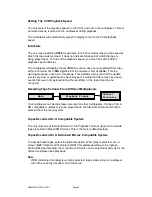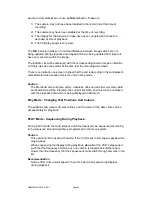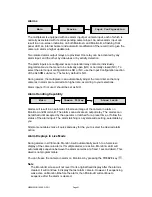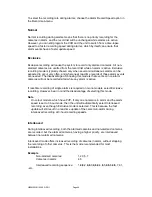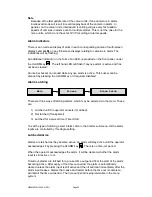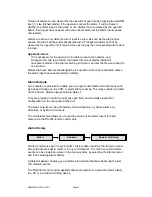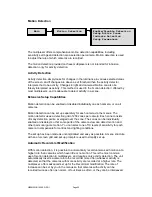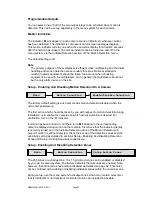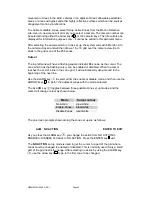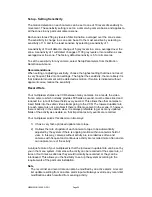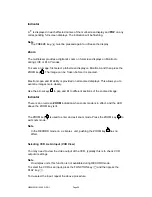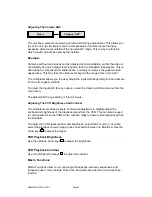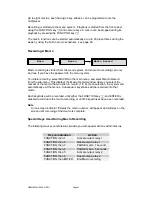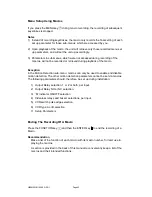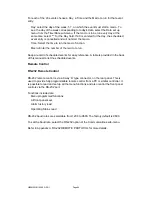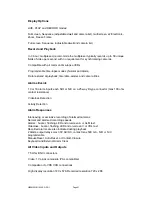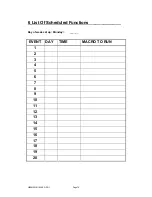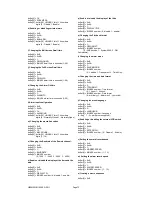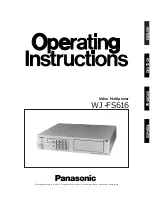
HBZMXSIB/10/16SD-PR-1
Page 58
Special Functions
Videoloss
You get the indication, V, displayed in each affected cameo of the multi-screen
display and VDL on any corresponding, full-screen displays.
You can select an output to be closed whenever video loss is present, and can turn
the buzzer on and off during video loss, as follows:
1) Select the Videoloss Action sub-menu.
2) Select the Camera for set up.
3) In each output field, ENABLE or DISABLE the corresponding relay.
4) In the Buzzer field, select ENABLE or DISABLE.
Monitor-A: If the camera is being displayed at the time that videoloss occurs, the
camera image will be frozen. However, if sequencing is in progress, the display will
be blanked when it is switched to a camera experiencing videoloss.
Monitor-B: Monitor-B cannot freeze images, and so the display will always be
blanked while a camera with videoloss is selected.
When videoloss is detected, the affected camera is temporarily removed from the
record list, and the coded digital data recorded with each field will be updated to
indicate a videoloss situation on the affected camera. This videoloss status is then
shown during playback. The multiplexer system continues to monitor cameras which
have videoloss and will automatically restore the cameras when videoloss ceases.
Disabling Cameras
The multiplexer allows you to disable cameras which are not connected, or will be out
of service for an extended time, so that unnecessary videoloss messages can be
avoided see page 30.
Freeze Operation
Press the FREEZE key
to freeze multi-screen or full-screen displays on Monitor-A
in the LIVE or PLAY modes. The FREEZE button is used both to freeze and to
unfreeze displays.
Note that frozen images can be ZOOMed.
Freezing A Single Multi-Screen Section
Using an active cameo (see page 37), you can freeze (or unfreeze) only one cameo
in a multi-screen display made up of many different cameras. This is useful when an
event must be frozen for further investigation or for review by a supervisor, but the
balance of the cameras must continue to be monitored.
Zoom operates on either a frozen or a non-frozen display. A zoomed signal can be
frozen.
Summary of Contents for ZMX/BD/10
Page 1: ...HBZMXSIB 10 16SD OP 1 Page 1 Operating Instructions ZMX BD 10 ZMX BS 10 ZMX CS 10 Multiplexers...
Page 3: ...HBZMXSIB 10 16SD PR 1 Page 2 This page is intentionally blank...
Page 5: ...HBZMXSIB 10 16SD PR 1 Page 4 This page is intentionally left blank...
Page 7: ...HBZMXSIB 10 16SD PR 1 Page 6 This page is intentionally left blank...
Page 78: ...HBZMXSIB 10 16SD OP 1 Page 2 This page is intentionally blank...
Page 80: ...HBZMXSIB 10 16SD OP 1 Page 4 This page is intentionally blank...

